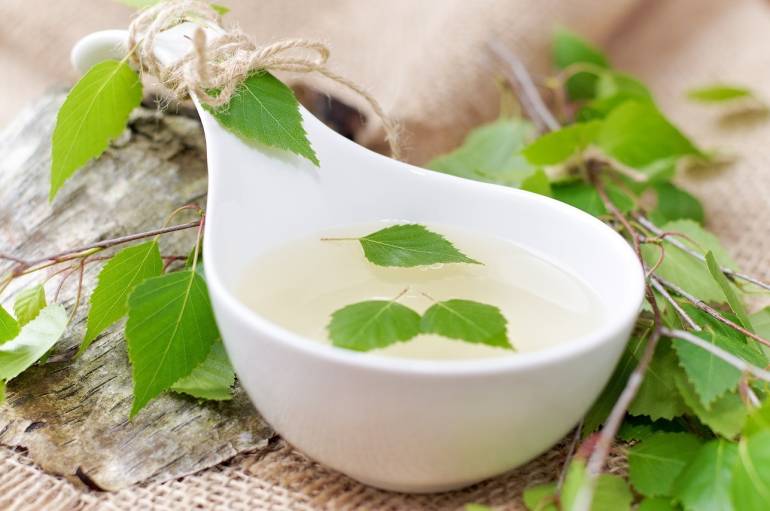Although hemorrhoids are increasingly being diagnosed, they are by no means a common topic of conversation between patients and doctors. People affected by this problem often feel embarrassed and are often unable to present the nagging symptoms to their doctor. Why is this the case? Should hemorrhoids be a cause for embarrassment? How can hemorrhoids be diagnosed? How can anal varices be treated?
Hemorrhoids – already a disease, or a symptom of a disease?
Hemorrhoids are treated by patients as a condition, but in fact they are not classified as a disease, but only as a symptom of a condition known as venous insufficiency. Hemorrhoids, also referred to as anal varices and bleeding nodules, are visible, enlarged veins of the anal plexus (that is, the system of veins reaching the rectum). There are two types of anal varices: internal (located inside the anus) and external (visible on the outside of the anus). In addition, hemorrhoids can be classified according to a four-stage scale that takes into account their size:
- Grade one: the bleeding nodules are enlarged, but do not fall outward.
- Grade two: hemorrhoids “protrude” outward during defecation and “retract” into the anus after defecation.
- Grade three: nodules “fall out” during defecation, after which it is necessary to manually insert them into the body cavity.
- Grade four: the bleeding nodules are located on the outside of the rectum and become thrombosed.
How can hemorrhoids be diagnosed?
In the case of external hemorrhoids, we can observe the changes ourselves. They become visible in the form of swollen, dark veins (as a result of high blood content), which take on a round, convex form. Internal rectal varices can only be diagnosed during a specialized examination – colonoscopy, anoscopy, rectoscopy.
Hemorrhoids – causes of formation
The cause of hemorrhoids is primarily venous insufficiency. This disease arises as a result of genetic (not dependent on us) or environmental (i.e. habits, addictions – elements we can influence) dependencies. Symptoms of venous insufficiency include varicose veins of the lower limbs and varicose veins of the anus (that is, hemorrhoids).
Other reasons for hemorrhoids include sitting too long, frequent bowel movements that are preceded by severe constipation, and frequent diarrhea. It has been proven that the period of pregnancy also favors the diagnosis of bleeding nodules in female patients. Pregnant women are burdened with a higher probability of hemorrhoids, due to reduced motility, hormonal changes and changes related to blood circulation…. Causes of hemorrhoids also include portal vein hypertension and long-distance running.
Anal varices – symptoms suggestive of their presence
As already mentioned, external hemorrhoids are easier to diagnose than internal hemorrhoids. However, in the case of both types, it is possible to establish characteristic symptoms, alerting to the presence of varicose veins. Symptoms of hemorrhoids include:
- Pain in the anal area, occurring during, or immediately after a bowel movement,
- Itching and “burning” of the skin near the anus,
- The impression of an incomplete bowel movement,
- Blood in the stool (usually bright red in color and in small amounts),
- “prolapse” of nodules from the anus (in the case of internal hemorrhoids).
What should the treatment of hemorrhoids look like?
In medicine, there are numerous and varied treatments for hemorrhoids. The choice of treatment depends on the size of the hemorrhoids, and the decision on this issue should be made by a doctor (preferably a specialist – a proctologist). In the case of advanced hemorrhoids, in addition to drug treatment, there is the possibility of surgical treatment (the hemorrhoid drugs used in this case may not be effective enough). Usually, however, doctors recommend symptomatic treatment, consisting of oral and/or topical preparations.
Oral medications are used to improve circulation, but also as part of improving the tightness (permeability) of blood vessels. Also orally administered are preparations that facilitate bowel movements (such as the drug Alax). On the other hand, in the case of topical agents (ointments, suppositories), we expect an effect that relieves itching, reduces nagging pain and burning, but also inhibits the possible growth of bacteria, fungi and viruses.
Ointment, suppository, or tablet – which hemorrhoid medication is effective?
Sometimes doctors make the form of therapy dependent on the patient’s preferences. Then it is useful to know whether any of the methods may be so inconvenient for us that we will certainly not opt for it. This is important because of the fact of continuity and regularity of treatment.
Pills used in the treatment of hemorrhoids
Undoubtedly, the easiest way is to take a pill. But actually, will it prove to be an effective enough cure for hemorrhoids?
The group of oral medications used in the treatment of anal varices includes laxatives and those that improve circulation. Over-the-counter laxatives contain substances that act in three ways: by swelling (fiber, bran, pectin), coating (liquid paraffin), and absorbing water and liquefying fecal masses (osmotic laxatives). The use of laxatives is aimed at counteracting constipation, which is one of the main causes of hemorrhoids. On the other hand, drugs that affect circulation and seal blood vessels, are used not only in the treatment of hemorrhoids, but also varicose veins of the limbs. The main representatives of drugs in this group are diosmin, escin, as well as vitamin C, rutoside, extract of ruscus herb, and extract of ruta herb.
Suppositories, ointments used in treatment of hemorrhoids
Most patients find the application of suppositories more difficult and less comfortable than applying (externally) ointments. This is certainly the case, but we must not forget that suppositories have advantages over externally applied ointments. For in their case, we achieve not only action within the area on the outside of the rectum, but also in the rectum. In view of such an important advantage, some manufacturers of hemorrhoid ointments have introduced rectal applicators. The use of an applicator allows the ointment to be easily inserted into the area where the suppository would have been.
Today in pharmacies you can buy many preparations in the form of ointments, gels or suppositories for hemorrhoids. It is worth learning about the ingredients whose properties reduce the problem of hemorrhoids. Among them are:
- Plant extracts: from the bark of Oak, extract from the rhizomes of Pentecostal, extract from Witch Hazel, as well as bismuth compounds, ichthyol, tannin, or zinc oxide. The advantage of the listed ingredients is their soothing and astringent effect.
- Strong anti-inflammatory agents – corticosteroids (available only by prescription).
- Substances with anesthetic effects (eliminating the sensation of pain), such as lidocaine and benzocaine (found, for example, in liquid powders, Aesculan and Neo-Aesculan drugs).
- Ingredients with antiseptic, or disinfectant action (for example, propolis).
- Substances that soothe itching and burning (menthol).
- Ingredients characterized by the ability to seal blood vessels (including Chestnut seed extract – Aesculan ointment, Neo-Aesculan gel).
What preparations are worth recommending?
Preparations worth using to treat hemorrhoids should contain at least one of the ingredients listed above. In order to ensure the safety of application, it is worth opting for remedies of plant origin. At the same time, it is important to keep in mind possible allergies to the ingredients of the preparations, as well as the convenience of use (application).
Alax – a herbal oral preparation that prevents and relieves constipation
Alax is a drug used to treat constipation. It contains in its composition powdered juice of Aloe vera leaves and extract of Buckthorn bark. Aloe extract, is characterized by a strong laxative effect, while Buckthorn extract has a weaker effect. Precisely because of the potency of the individual components, it can be concluded that the combined selection of Aloe extract and Buckthorn extract in Alax, results in the mutual complement of the therapeutic effects of both medicinal plants. Also important for the patient is how quickly the preparation works. In the case of Alax, the therapeutic effect should occur relatively quickly, that is, as soon as about eight hours after application.
Aesculan and Neo-Aesculan – preparations with rectal applicator
Aesculan and Neo-Aesculan are preparations of almost identical composition, but come in two forms – ointment and gel. In the composition of both drugs there is an extract of Horse Chestnut bark and lidocaine hydrochloride. In the case of Aesculan ointment, the concentration of Horse Chestnut extract is slightly higher.
Aesculan and Neo-Aesculan preparations are used in the treatment of hemorrhoidal disease. The content of horse chestnut bark extract provides anti-inflammatory and astringent action, while the presence of lidocaine hydrochloride helps reduce the sensation of pain (anesthetic action).
How to use Alax, Aesculan and Neo-Aesculan?
The drug Alax should be taken just before bedtime with a glass of boiled lukewarm water. A bowel movement should be expected upon waking the next day.
Aesculan ointment and Neo-Aesculan gel are applied with the help of the enclosed cannula, which must first be screwed onto the tip of the tube. The drug, prepared in this way, is inserted into the rectum in an amount of 0.5-1g (that is, strips of about two centimeters in length). In the case of external hemorrhoids, the application of the drug can be limited to the area outside from the anus.
Hemorrhoids – prevention
Three basic recommendations are considered in hemorrhoid prevention: modification of eating habits, regular bowel movements and daily physical activity.
Hemorrhoids and diet – can we prevent them with proper nutrition?
As already mentioned, one of the factors predisposing to hemorrhoids is constipation. The formation of constipation is mainly due to an improperly composed diet. So what should your diet look like to avoid constipation and protect yourself from anal varices? A high-fiber diet, otherwise known as a rich-residue diet, is considered to be the right diet that can regulate the work of our intestines in the right way. The term “fiber-rich” means that only part of the ingested food is absorbed, and the remaining (significant) part serves as a “provocateur of defecation.” It is the diet rich in dietary fiber that relieves our body of the problem of constipation and thus supports preventive measures against the development of hemorrhoids.
Physical activity – support against hemorrhoids
Physical activity is part of prevention for many conditions, including anal varices. People with hemorrhoids should perform specialized exercises that involve tensing the rectal muscles (with “pulling” the anus inside the rectum) and then relaxing them. This exercise, should last quite a long time and be repeated regularly (several times each day).







